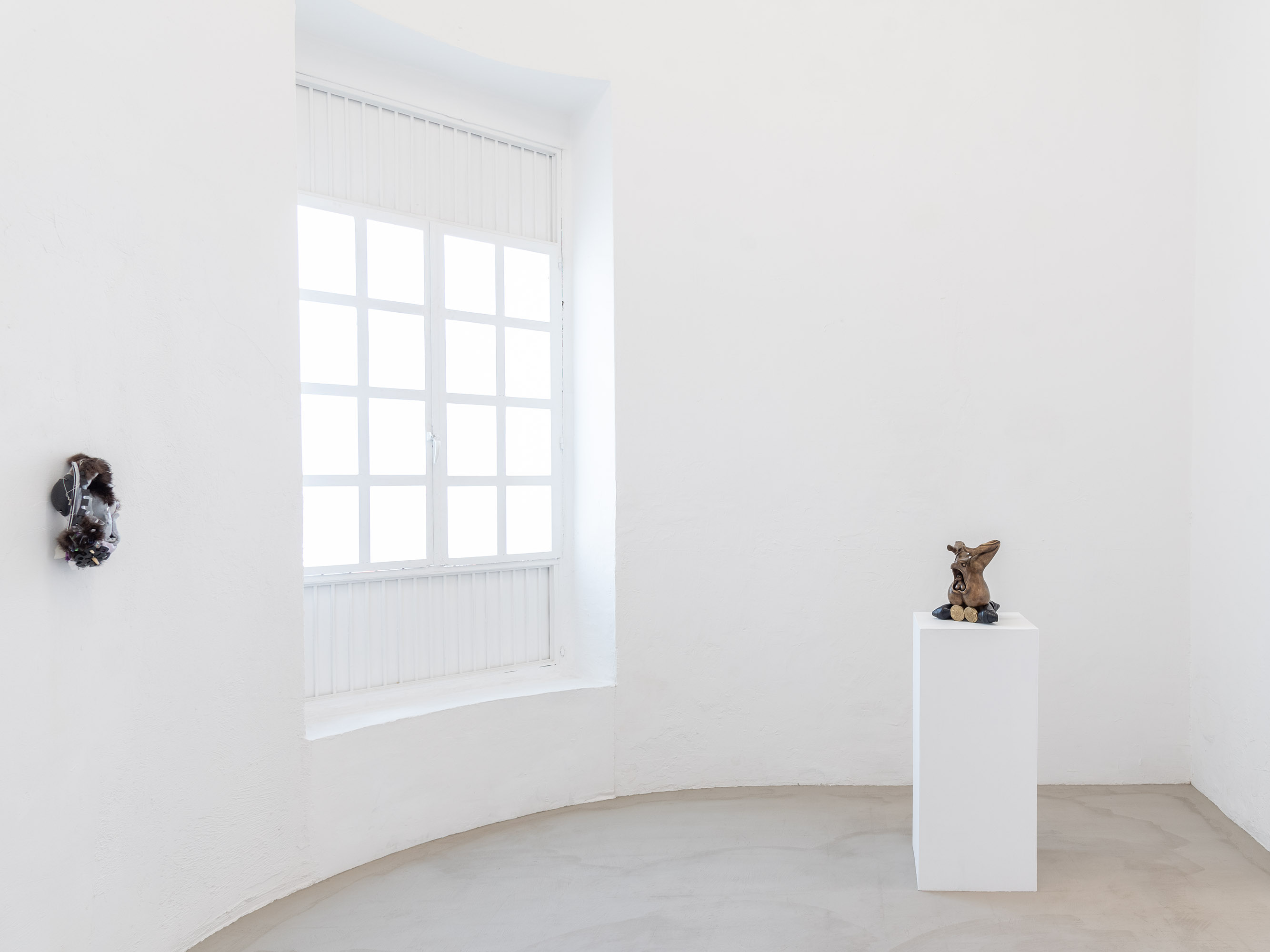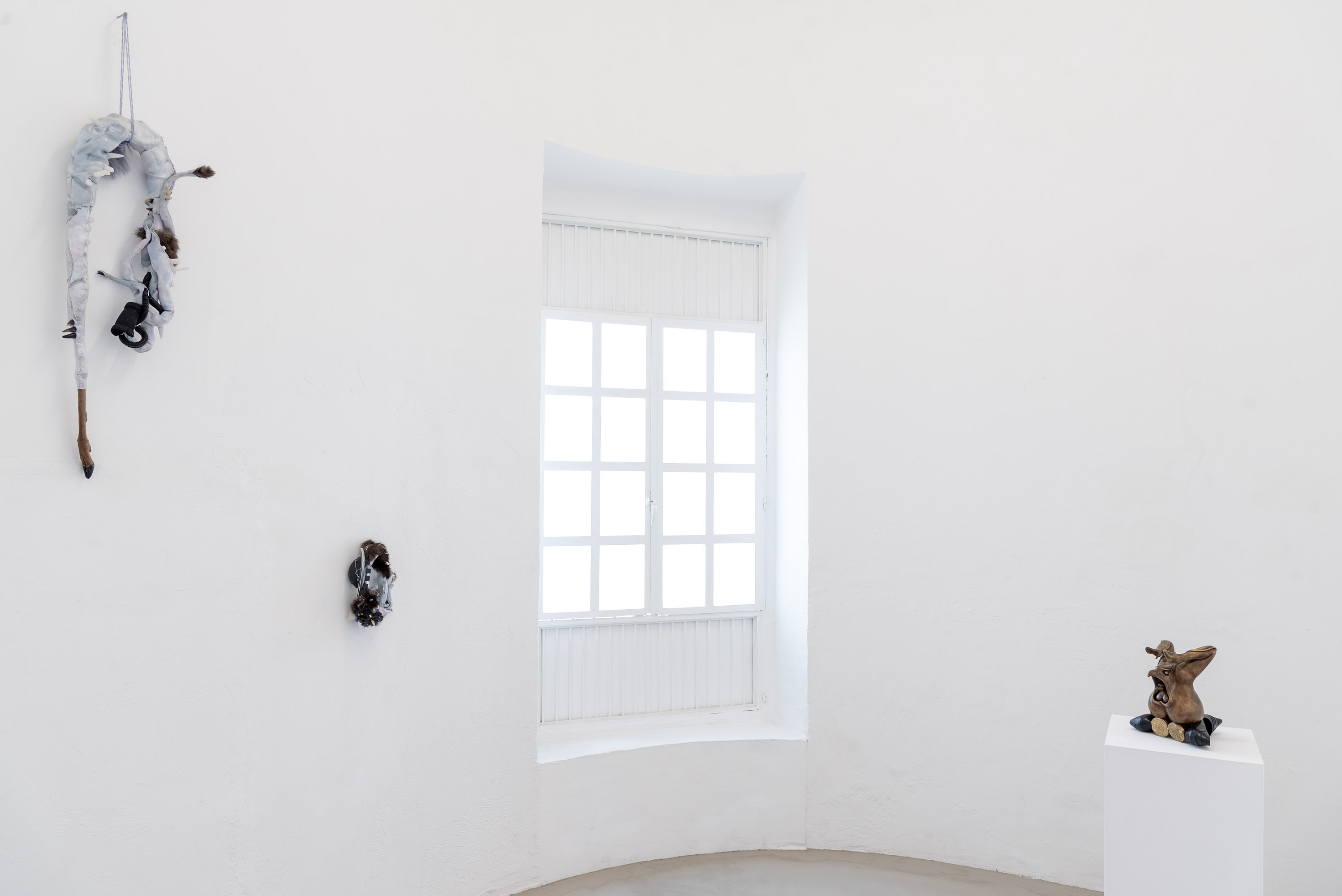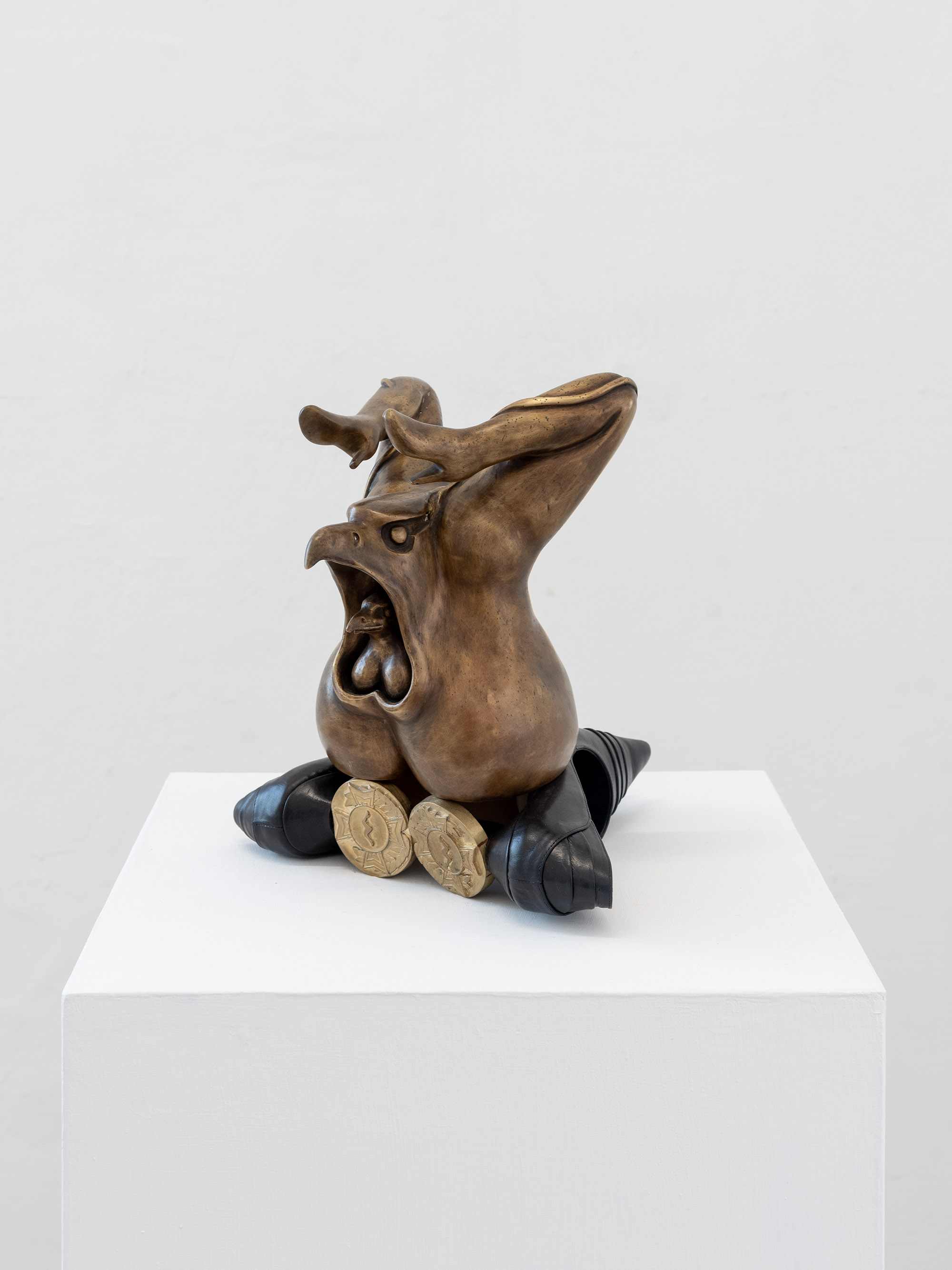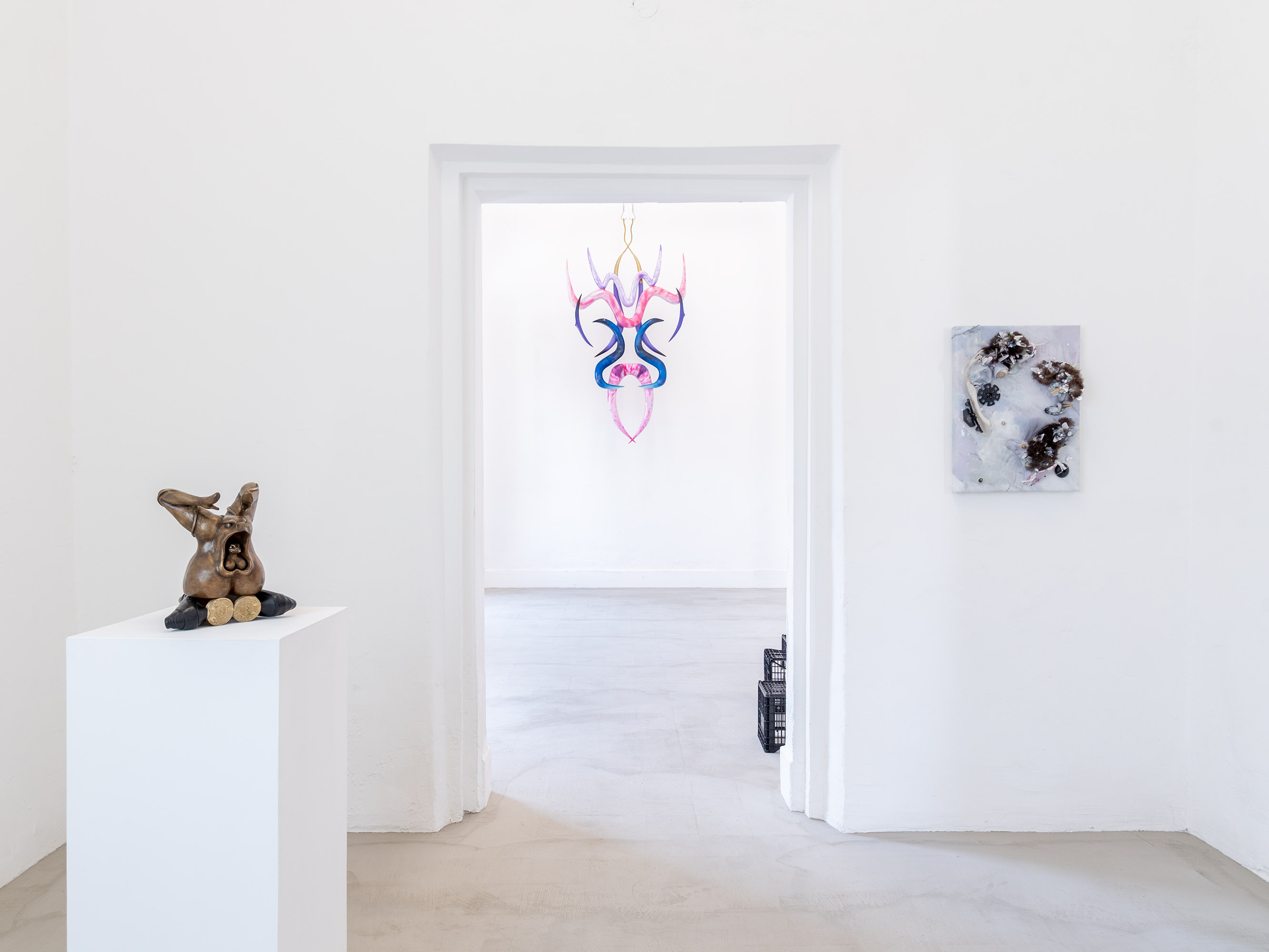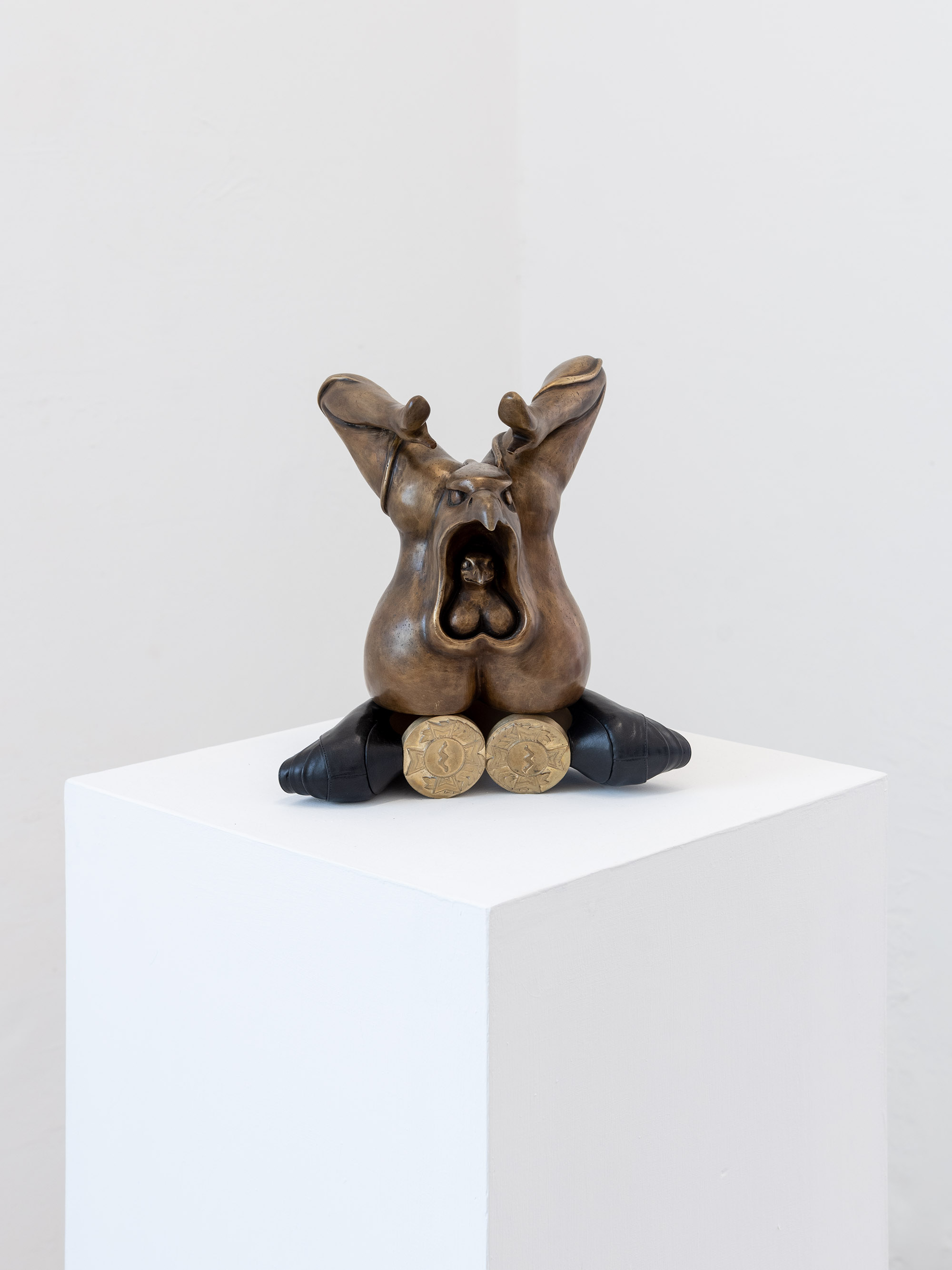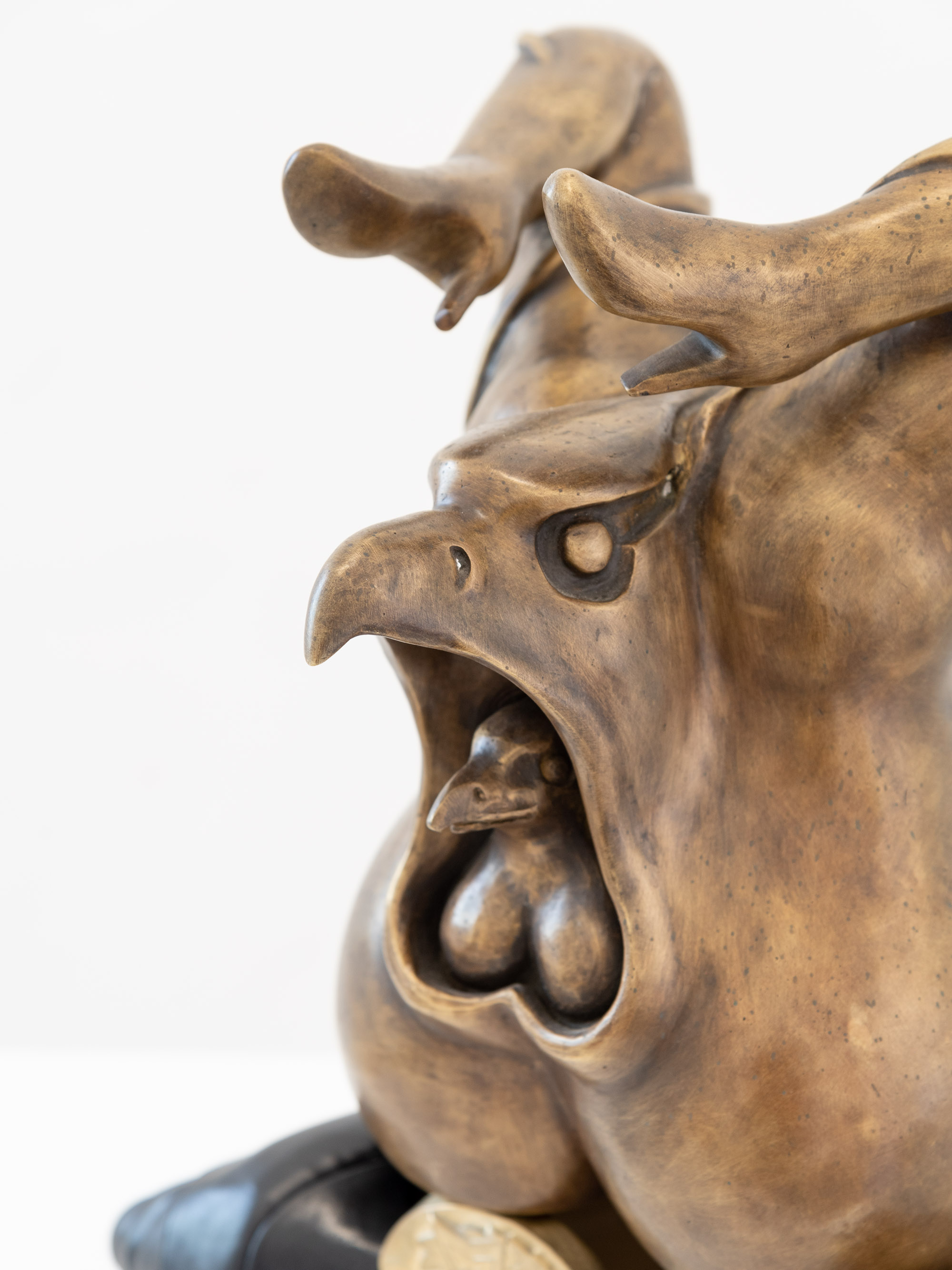The inception of La Mano Negra was largely based in a conversation Rubén Ulises and I had, about the influence of anime in a younger generation of artists. Growing up looking at things like trash and pulp, anime, kung-fu, and fantasy translated into more mature ways of thinking about the supernatural and how that could be utilized to challenge power structures or provide paths from the norm. This initial conversation has since distilled into this exhibition, of contemporary practices that sit in the divergent, in the forces that work beneath a physical manifestation, that search for alternate understandings of established equations.
La Mano Negra is an exhibition that unites seven artists who use a fetishistic approach to their practices, imbuing inanimate objects with meaning through the transformation of material. Isolating a material, object, image or symbol in a talismanic obsession, or, using that fixation to subvert the definition of a symbol. This selection of sculptures and videos are ritual and reflexive objects, achieving expansiveness through abbreviated form. The works use formless presence to manifest each artists’ expression. Though they may not agree, they are creating alternative economies of spirituality, shifts in esoteric space made with material interventions.
The name La Mano Negra is used by various insurgent and organized crime groups in several parts of the world. Their actions are unseen but marked with a claim of responsibility.
Resisting flattened narratives, Bárbara Sánchez-Kane modifies the Pemex logo- an eagle with a drop of oil- into a set of testicles, adding to this symbol of national identity a pair of high-heeled shoes inspired by the surrealist Meret Oppenheim. Sánchez-Kane uses this collision to challenge gendered structures of power and palimpsestic identities.
Text by Yeni Mao

